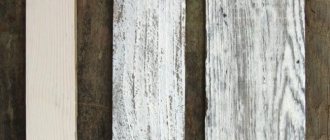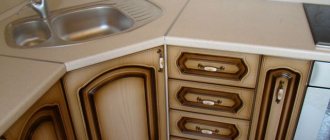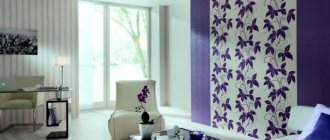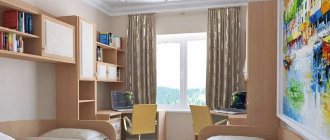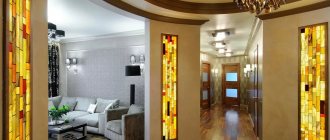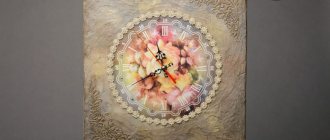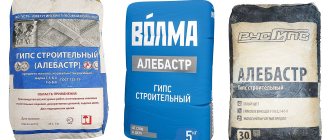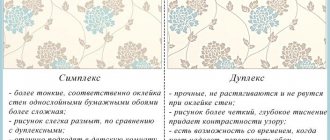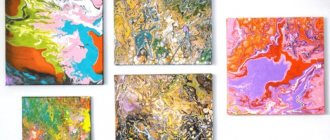The use of gypsum and its benefits
Building gypsum is obtained from a special type of stone, which itself consists of gypsum particles. Previously, the material undergoes procedures such as burning and grinding into powder form. Next, the base is simply kneaded until a homogeneous mass is obtained. It is better known as alabaster.
The scope of application of gypsum is really wide:
- construction and repair work using paint;
- production of decorative products, for example, figurines;
- as a binding material at an intermediate stage.
For modeling and stucco molding, compositions with a gypsum base are often used. They are indispensable in the production of small architectural forms, pouring decorative tiles and bricks. Iron oxide pigments also participate in the process.
The mixture itself quickly hardens and begins to set. To have time to implement all your plans, you need to work very quickly. The white tint is standard for working substances in this case.
Preparing and using coloring material for the garden and other places should not cause much trouble. Other advantages include affordable prices and a wide range of applications. The positive aspects include environmental safety. The material “breathes”, as if it itself maintains a stable temperature level, which benefits the gypsum.
For interior decoration, many people prefer to use gypsum compounds. They allow you to create real masterpieces that will look good in any interior. For example, in the version of gypsum tiles.
The material is endowed with other additional properties:
- resistance to open fire;
- low weight, lightness;
- simple installation, processing;
- The technology for painting plaster is also simple.
But gypsum bases can manifest themselves in different ways while they are in active use. For example, alibaster itself is afraid of exposure to moisture in large quantities. In general, any powder with this material can be easily dissolved if the surface is poured with at least a small amount of water. The buyer decides how to paint the plaster.
Why paint polyurethane
Before moving on to choosing paints and applying them, you should figure out whether this procedure is so important that you bother with it?
Experts have several arguments in this regard:
- Of course, polyurethane itself looks good, however, it attracts dust and dirt well, which is difficult to remove from porous stucco. Caring for a painted surface is much easier.
- If we are talking about baseboards and moldings, then no matter how carefully their installation is carried out, there will definitely remain joints between the panels, especially at the corners. You can get rid of them using putty, which is hidden under a layer of paint.
- And the last thing is, of course, the decorative properties of the painted surface. Finished stucco looks much more attractive, not to mention the ability to give the product any shade or simply paint it, for example, bronze or gold.
These arguments are quite enough to make the right decision in favor of painting.
Making plaster stronger
Gypsum itself is a material that has sufficient strength, but it will never be superfluous to strengthen and improve this property. Adding appropriate effects is permissible at any stage - both when mixing the solution and after the product is ready. It is enough to cover everything with the desired composition. For plaster figures, the same procedure applies.
The first case involves using only lime and PVA construction adhesive in small quantities. Iron sulfate or zinc sulfate will be needed to color finished products cast from plaster.
Reducing the proportion of moisture in the solution itself is the simplest solution for those who want to make the plaster stronger. 7 parts water to 10 parts gypsum are standard proportions that are used in all cases. To create a stronger connection, you need to take a ratio of 6:10. The plaster surface can be painted in any color.
But there shouldn't be too much water. Otherwise it will only turn out crumbly. Adding PVA glue to the composition eliminates additional risks. The acrylic variety of compositions sometimes cannot do without them either.
For an average batch, a couple of tablespoons of thinner are enough to increase the structure’s strength. Individual particles of gypsum are easily glued together with the appropriate material. A mixture of gypsum and slaked lime also shows good results. In this case, one share of calcium hydroxide will be enough to obtain the desired effect.
Several other components are suitable for finished products:
- inkstone;
- solution of zinc sulfate salt.
They cover many parts.
When exposed to zinc salt, there is no need to worry about the color of the product changing. Only vitriol can give the surface a yellow-brown tint, no matter how you decide to paint the plaster in a given situation.
Primer
When painting action figures, chances are you want your work to last. Therefore, first of all, it is worth using a primer. This is not necessary, you are not painting walls, but a primer will allow the paint to go on more evenly and last longer. Especially when it comes to water-based paints, which are the most convenient for painting on plaster and clay.
The primer can be any, but, in my opinion, the best is acrylic - it has almost no smell and penetrates the material well. Although there are also textured primers (with small particles that create spectacular irregularities), this is already a question, because the figures are small, and textured primers are designed to cover large surfaces. It will be difficult to create a high-quality texture in a small area.
What varnish should I use?
Varnish is used if it is necessary to improve not only the appearance of a gypsum product, but also its performance characteristics. The following types of varnish are ideal for varnishing such a surface:
- shellac;
- acrylic;
- oil.
What are the characteristics of each type of varnish?
Shellac
This type of varnish is more often used in decoupage and finishing works. For example, they are used to cover gilding and are used in furniture restoration. Shellac varnish also provides a fine, natural polish. The material itself is a solution of shellac and alcohol; it can be of different shades to give a decorative appearance to the products. Also suitable for coating gypsum surfaces.
Acrylic
To protect plaster or a product made from it from moisture and other negative factors, use acrylic-based varnish. This composition, in addition to its main functions, also performs decorative functions. They can not only be varnished, but also painted. Also, these types of compositions can be matte and glossy. The choice of coverage depends only on your personal preferences. Matte varnish is perfect for processing gypsum tiles, so the imitation of rough stone will be preserved down to the smallest detail, but a glossy coating will add shine to the surface.
In the video: using acrylic varnish.
Oil
These types of varnishes contain artificial resins and herbs. When added, such components give an oily consistency. Thanks to its texture, oil varnish creates a thin film on the gypsum surface, which, in turn, after complete drying, is able to protect the material from various mechanical influences and destructive processes.
How to restore plaster garden figures
Gypsum or alabaster are not strong enough materials; when impacted, from humidity and frost, they easily crack and lose color. In such cases, you can carry out the restoration yourself:
- Small chips can be eliminated by applying gypsum putty to the damaged area. After drying, this part is painted, varnished and decorated in the same way as the entire figure. You can repaint the entire craft;
- When the figure is broken in half, it is easy to glue it back together. If additional pieces were broken off, they are first fixed with waterproof glue, and then the halves of the figurine are fastened together. The joint is coated with putty, tinted, and varnished;
- Scratches on the figurine are removed with putty. After it has dried, the surface is re-tinted and varnished;
- The cracked varnish is carefully peeled off with fine sandpaper and a new layer is applied with a brush.
Multi-colored snails will easily complement a Japanese bonsai or flower bed
What else can you cover?
When the plaster product is ready, it is not recommended to delay painting. After all, over time, such a base loses its ability to absorb other substances. For example, adhesion between the treated surface and plaster varnish becomes worse.
Before painting the plaster, it needs to be prepared. It is good if it is possible to carry out additional heat treatment. To do this, structures are sometimes heated at a temperature of 250-500 degrees for several hours. The indicator reaches the upper mark gradually.
Paint for plaster can be water- or acrylic-based. On sale are both products intended for painting finished products, and options such as tinting pastes - they are added directly to the gypsum solution before the product is made from it.
But this process is impossible without the use of special equipment. Therefore, most often they get by with regular drying, which takes 2-3 days, even if color is used.
Hot drying oil is used if the owners have already noticed that the surface has lost its ability to absorb. After this, the product is dried in a room while maintaining room temperature. In this case, you can refuse to paint the figure; over time, the surface itself acquires an interesting appearance.
Varnishes containing wax are also used to obtain unusual decorative effects. The latter may vary depending on the use of different gypsum pigments.
Master class on restoration of plaster figurines or Country sketches-5
Elmira Bolshebratskaya
Master class on restoration of plaster figurines or Country sketches-5
Probably, anyone who has a dacha must have at least one plaster figurine as a decoration for their garden or vegetable garden. Likewise, until recently, we had 3 gnomes, who from spring until late autumn delighted us with their presence at our summer cottage .
Spring has arrived and we eagerly went to the dacha to prepare the greenhouses for the new season. And I met with my gnomes, who, unfortunately, did not look presentable.
After standing for two seasons and overwintering in a greenhouse, the smallest gnome lost its charm, the paint was all cracked and peeling, and chips appeared in some places.
I had to take it home and try to restore it . As it has become very relevant now that the Internet can help us, I watched a number of videos and master classes on restoration and decided to do it my own way.
So, let's get started: we will need plaster (or alabaster, a brush for applying plaster , brushes for painting, acrylic paints (I used paints and brushes from a painting by numbers set, yacht varnish, a brush for applying varnish
Step 1 – clean the figurine from peeling paint
Then we look for chips with a nail file or sandpaper - after cleaning, the chips may increase, but this is not a problem
Step 2 - dilute alibastra or building plaster to the consistency of liquid sour cream so that it does not set quickly, add a pinch of citric acid (knowledge from the Internet)
Final Recommendations
In general, the ability to absorb moisture is one of the positive aspects of gypsum. However, the intensity of this process may vary. Thanks to this, veins are formed on the surface, making the texture similar to natural stone. Painting gypsum products is not difficult. You can even do without plaster.
Tinting paste along with water and a brush is all that is needed for the actual painting. How to paint plaster: a color of one or several shades is diluted in water or white paint, mixed and coated with the product.
An acrylic primer or a corresponding type of paint can be combined with water. It is added in an amount of 30-50 percent of the total volume of other substances. Once the first layer is ready, you can use darker shades to go over the rest of the surface. Or use an option where the dye is contained in a concentrated form.
When processing, you can use not only brushes, but also sprayers. Even those that remain from cleaning chemicals or other types of paint.
Painting plaster at home is not such a difficult process. And there will be many advantages. For example, such work is easy to carry out at any convenient time, and the effect is exactly what the buyer needs. He can process every tile and every detail, only based on his personal preferences.
What paint to paint plaster figures (1 video)
Plaster in the interior (25 photos)
Preparing for painting
When choosing what paint to paint garden figurines, do not forget about the subtleties of the painting process. It is important to remember that:
- The color scheme is selected based on the design idea and the characteristics of the future location of the garden figurine.
- The volume of paints purchased will vary. As a rule, white, black or beige paint is purchased in large quantities - it is applied to the entire surface and, as a rule, is used as an additional primer. The consumption of colored paints will be much less, so you shouldn’t buy them in excess.
- To paint large surfaces it is convenient to use a spray gun; to draw details you will need a brush; You can get by with a cotton wool or gauze swab.
- The peculiarity of acrylic paint is that it dries quickly, and dried paint can only be removed using a special solvent. Therefore, excess from the surface of the sculpture must be removed immediately, and the brushes will have to be washed periodically.
Acrylic for creating accents Source remlandia.ru
Video description
How to paint figures with a spray gun in the following video:
A popular technique is layer-by-layer application of water-soluble paints.
using a tampon. The plaster surface absorbs water unevenly. The combination of several layers and shades allows you to get the effect of a natural material; With some training, the imitation turns out to be very reliable.
To get a more saturated color
, the paint is applied in two or three layers. This must be taken into account when mixing paints of several tones in sufficient (or preferably with a small margin) volume. Each subsequent layer is applied at least three hours later.
Garden decor is painted in the following order:
Preparation
. Before painting gypsum garden figurines, the surface is carefully treated with a primer; then the main paint will lie smoothly and neatly. You can buy a ready-made composition at a hardware store or make it yourself from a mixture of two parts water and one part PVA glue.
Skillful use of acrylic paints allows you to achieve naturalness Source maja-dacha.ru
Protection
. If you want to decorate your garden with a classic white garden figure, you need to take care to protect the pores of the plaster; otherwise, the elegant decoration will quickly lose its whiteness. Typically, the protective composition (primer) is applied in a workshop. If you want to do it yourself, be sure to thoroughly clean the surface first.
Painting
. Choose compounds intended for outdoor use. To apply a complex design with a large number of details, it is convenient to first outline the pattern with a simple pencil.
Applying varnish
. Rain, fog and snow contribute to the destruction of unprotected gypsum, oversaturating it with water. The painted plaster figurine must be given maximum moisture resistance. To do this, it is coated with weather-resistant transparent varnish on a polyurethane or silicone base (can be used for yachts). The paint composition can be glossy or matte; the latter gives the figure a more natural appearance. The varnish layer enhances the brightness of the colors; To make the shiny surface truly reliable, apply several layers.
Before and after Source remlandia.ru
Results
Painting plaster yourself is possible if you follow the basic rules:
- thorough surface preparation;
- mandatory priming;
- applying paint in 2-3 layers;
- varnish coating;
- use of compatible compounds;
- follow the paint manufacturer's instructions.
In the absence of skills, it is necessary to perform trial operations on samples until a stable positive result is obtained.
Materials for painting stucco
Painting plaster with your own hands is possible, but it requires certain skills, time and accuracy. Carry out work in a dry room with good ventilation, allowing the intermediate layers to dry out. And everything will work out!
